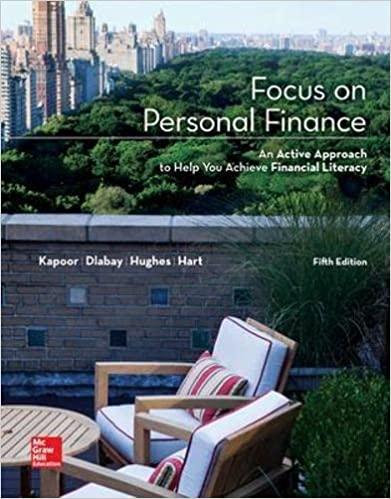



Questions on finance:
Q1.
Kokomochi is considering the launch of an advertising campaign for its latest dessert product, the Mini Mochi Munch. Kokomochi plans to spend $4.7 million on TV, radio and print advertising this year for the campaign. The ads are expected to boost sales of the Mini Mochi Munch by $8.1 million this year and $6.1 million next year. In addition, the company expects that new consumers who try the Mini Mochi Munch will be more likely to try Kokomochi's other products. As a result, sales of other products are expected to rise by $1.8 million each year. Kokomochi's gross profit margin for the Mini Mochi Munch is 37%, and its gross profit margin averages 22% for all other products. The company's marginal corporate tax rate is 30% both this year and next year. What are the incremental earnings associated with the advertising campaign? Complete the table for year 1 below: (Round to the nearest dollar.) Incremental earnings forecast Year 1 Sales of Mini Mochi Munch 8100000 Other sales 1800000 Cost of goods sold Gross profit $ Selling, general and admin. expenses Depreciation EBIT Income tax at 30% Unlevered net profit $Complete the table for year 2 below: (Round to the nearest dollar.) Incremental earnings forecast Year 2 Sales of Mini Mochi Munch 6100000 Other sales 1800000 Cost of goods sold Gross profit $ Selling, general and admin. expenses Depreciation EBIT $ Income tax at 30% Unlevered net profitPlanet Enterprises is purchasing a $10.3 million machine. It will cost $52 000 to transport and install the machine. The machine has a depreciable life of five years using straight-line depreciation and will have no salvage value. The machine will generate incremental revenues of $4.2 million per year along with incremental costs of $1.1 million per year. Planet's marginal tax rate is 30%. You are forecasting incremental free cash flows for Daily Enterprises. What are the incremental free cash flows associated with the new machine? The free cash flow for year 0 will be $ . (Round to the nearest dollar.) The free cash flow for years 1-5 will be $ . (Round to the nearest dollar.)Beryl's Iced Tea currently rents a bottling machine for $50 000 per year, including all maintenance expenses. It is considering purchasing a machine instead and is comparing two options: a. Purchase the machine it is currently renting for $160 000. This machine will require $22 000 per year in ongoing maintenance expenses. b. Purchase a new, more advanced machine for $265 000. This machine will require $18 000 per year in ongoing maintenance expenses and will lower bottling costs by $15 000 per year. Also, $35 000 will be spent up front training the new operators of the machine. Suppose the appropriate discount rate is 9% per year and the machine is purchased today. Maintenance and bottling costs are paid at the end of each year, as is the rental of the machine. Assume also that the machines will be depreciated via the straight-line method over seven years and that they have a ten-year life with a negligible salvage value. The marginal corporate tax rate is 40%. Should Beryl's Iced Tea continue to rent, purchase its current machine, or purchase the advanced machine? To make this decision, calculate the NPV of the FCF associated with each alternative. The NPV of renting the current machine is $ . (Round to the nearest dollar.) The NPV of purchasing the current machine is $ . (Round to the nearest dollar.) The NPV of purchasing the advanced machine is $ . (Round to the nearest dollar.) Which of the following is the best choice? (Select the best choice below.) O A. Purchase the advanced machine. O B. Purchase the current machine. O C. Rent the current machine














